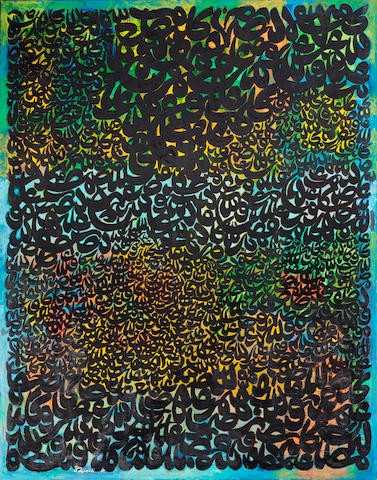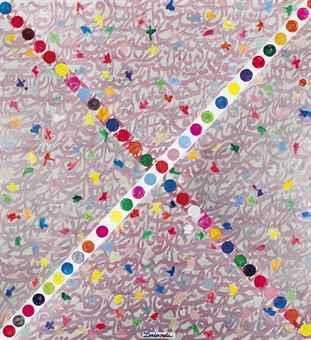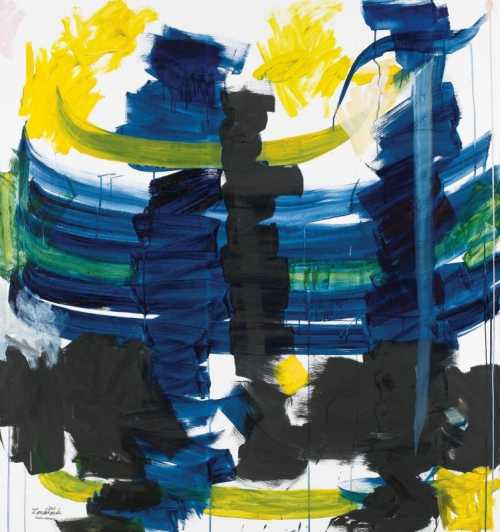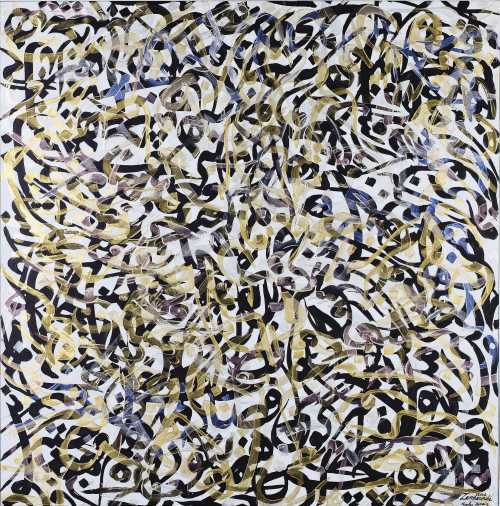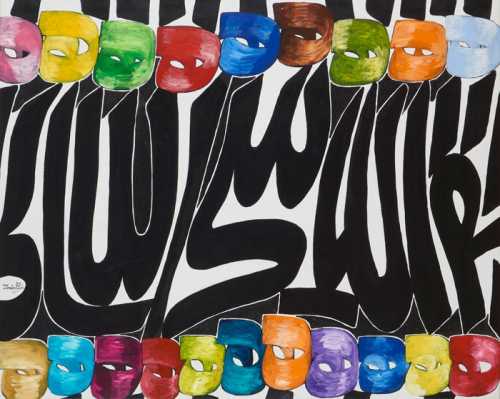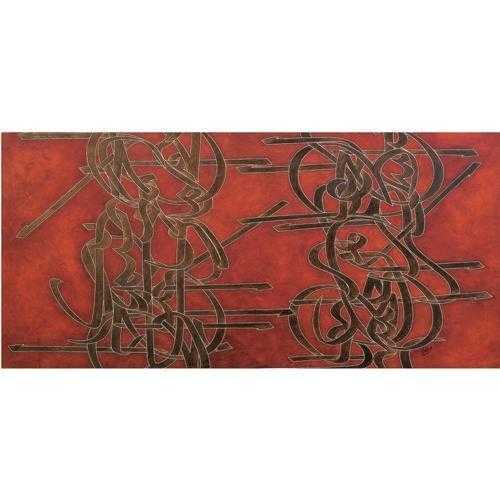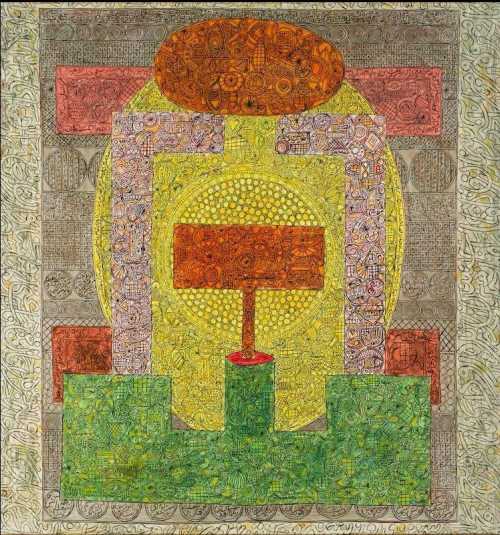- Untitled 1968
- Acrylic on canvas
- Painting, Calligraphy Painting
- 114 * 146 cm
- signed and dated '68 lower left, framed
Artwork Description
Whilst in his teens, Charles Hossein Zenderoudi stumbled across a sacred altar in the streets of Tehran, an encounter which would later lead him to establish the single most influential modernist art movement in Iran. The Saqqa-Khaneh movement, which takes its name from a type of religious shrine in the form of a drinking fountain, focuses heavily on the depiction of traditional Persian symbols and motifs related through a strictly contemporary artistic agenda.
Zenderoudi's work exemplifies Persian neo-traditionalist art. His choice of subject matter, calligraphy, is perhaps the most established formal mode of artistic expression to exist in Iran, but, by emphasizing form over meaning, and by stripping the written word down to its aesthetic, structural, fundaments, Zenderoudi subverts the traditional values of calligraphy. Zenderoudi's text is intentionally illegible and carries no literal meaning, thus freeing it from the confines of linguistics, and imbuing it with a sense of universality which rescues the archaic practice of calligraphy from obscurity, giving it fresh relevance in a global, modern context.
Whilst retaining an aesthetic universality, Zenderoudi's compositions also pay homage to Persian religious imagery. His works consist of heavily repeated letterforms, corresponding with the practice of Sufi numerologists, who believed in the spiritual significance of singular letters and worked these principles into hugely intricate talismanic charts. This multi-layered, polychrome intricacy captures the nature of some 'divine' utterances in their enigmatic complexity. Whilst Zenderoudi's works display a harmonious balance of skilfully rendered calligraphy, his canvases are often visually invasive and heavily decorated. The density of his compositions seek to capture the visual intensity of popular religious expression in Iran, where banners, standards, altars, murals and mosques colourfully decorate the urban landscape.
The present painting is both grand in scale and skilful in composition. An early work, it highlights the crucial juncture at which Zenderoudi broke from purely talismanic depictions and embraced calligraphy, a medium which characterised his work from that point onwards. An artist truly adept at creating a balanced synthesis of past and present, Charles Hossein Zenderoudi's paintings have become a permanent feature of the Iranian artistic tradition.
Zenderoudi's work exemplifies Persian neo-traditionalist art. His choice of subject matter, calligraphy, is perhaps the most established formal mode of artistic expression to exist in Iran, but, by emphasizing form over meaning, and by stripping the written word down to its aesthetic, structural, fundaments, Zenderoudi subverts the traditional values of calligraphy. Zenderoudi's text is intentionally illegible and carries no literal meaning, thus freeing it from the confines of linguistics, and imbuing it with a sense of universality which rescues the archaic practice of calligraphy from obscurity, giving it fresh relevance in a global, modern context.
Whilst retaining an aesthetic universality, Zenderoudi's compositions also pay homage to Persian religious imagery. His works consist of heavily repeated letterforms, corresponding with the practice of Sufi numerologists, who believed in the spiritual significance of singular letters and worked these principles into hugely intricate talismanic charts. This multi-layered, polychrome intricacy captures the nature of some 'divine' utterances in their enigmatic complexity. Whilst Zenderoudi's works display a harmonious balance of skilfully rendered calligraphy, his canvases are often visually invasive and heavily decorated. The density of his compositions seek to capture the visual intensity of popular religious expression in Iran, where banners, standards, altars, murals and mosques colourfully decorate the urban landscape.
The present painting is both grand in scale and skilful in composition. An early work, it highlights the crucial juncture at which Zenderoudi broke from purely talismanic depictions and embraced calligraphy, a medium which characterised his work from that point onwards. An artist truly adept at creating a balanced synthesis of past and present, Charles Hossein Zenderoudi's paintings have become a permanent feature of the Iranian artistic tradition.
Realized Price
100,337 USD
Min Estimate
60,720 USD
Max Estimate
84,601 USD
Average Artwork Worth
+63.951%
Average Growth of Artwork Worth
Sales Performance Against Estimates
Average & Median Sold Lot Value
2021 - 2025
Performance vs. Estimate
2021 - 2025
Sell-through Rate
2021 - 2025
